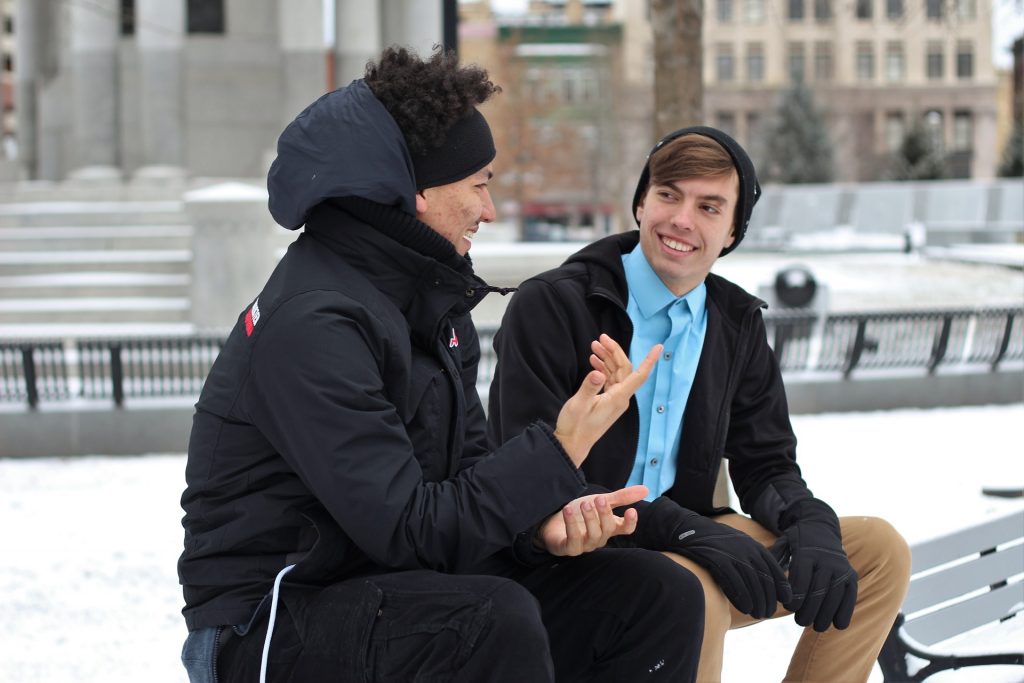The Art of Conversation Part 2: Active Listening and Small Talk
How to actively listen, engage in small talk and avoid conversational narcissism!
In our last post, we talked about what a conversational narcissist is, and how NOT to be one by actively listening. In this post, we’re going to learn about small talk and a little more about active listening.
Active listening is more than just paying attention to what the speaker is saying and making noises to acknowledge that you’re listening. You need to show that you’re listening with body language.
So how can you use body language to show the speaker that you’re listening? Use eye contact. It’s one of the most important parts of body language. By keeping eye contact with you’re conversation partner, you are showing them that you are interested in what they are saying. If you let your eyes wander, you’re telling your partner that you’re more interested in something other than what their saying. Plus, if you’re eyes are wandering, it will be easier to become distracted and lose focus on what the speaker is saying. In fact, a conversational narcissist might use this tactic to try and steal the focus of the conversation from the speaker!
Empathy for what the speaker is saying is also critically important to conversation. But how do we show the speaker that we are empathetic towards them? Mirroring their expressions and body language is the key! By mirroring the speaker’s facial expressions (smiling, frowning, raising eyebrows, laughing etc.) we show them that we understand them and that we are feeling what they are feeling.
Remember to check out the 3A Textbook to learn more about active listening!

Let’s talk about talking
We’ve spent a lot of time talking about listening, but how do we know what to say? Having a conversation with someone we know is one thing, but having a conversation with a complete stranger is another. Let’s face it, it’s awkward and hard to do. But it’s a very important skill, especially when dealing with guests. So what do you say?
There are two important factors to small talk; the subject and open-ended questions.
The hardest part about small talk is knowing what to say. A lot of the time we try to think of something witty or clever to say, or we try to pick an interesting subject. Here’s a tip; you don’t have to. It’s just small talk, you can talk about the weather! Or you can ask someone about their plans for the weekend, or what they did on the past weekend. What about that cup of coffee they’re carrying from you’re favourite coffee shop? Or what about that awesome leather jacket they’re wearing. The point is, the first subject in conversation may not be the most exciting. It’s about getting the ball rolling.
Now, how do we keep it rolling? Open-ended questions. Basically, an open-ended question is a question that you ask that requires longer, detailed answers. An open-ended question will typically start with or include the words who, what, where, when, why and/or how. For example, “Do you have plans this weekend?” can be answered with a simple “Yes” or “No”. But, “What are your plans this weekend?” requires more detailed answers. Using open-ended questions will help to keep the conversation moving, and they are how more interesting topics come up. Be careful that when dealing with guests, your open-ended questions are appropriate and not too personal. Keep it light.

We’ve got a a pretty good handle on conversation and we’ve covered a lot of topics; thanks for sticking around! To sum up, conversational narcissism is not the way to have good conversations. The best way to make sure that we’re not a conversational narcissist is to actively listen and allow the focus of the conversation to shift between partners. Just to be clear, it’s OK for you to shift the focus on to you when it’s appropriate, but make sure you allow it shift; you’ll get your chance to talk, but make sure everybody else has their chance too. Remember to show your partner that you’re listening and that you’re empathetic for them. Encourage them to talk. Small talk is hard, but if you keep it simple, friendly and ask open-ended questions, you’ll find yourself enjoying the passing conversations you have with strangers instead of dreading them.
And that is the Art of Conversation. I think I’ve done enough talking, thanks for listening!
Source
https://www.artofmanliness.com/articles/how-to-make-small-talk/